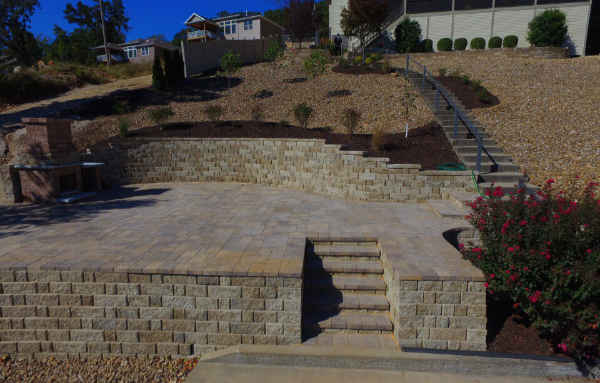A foundation is the base for a structure. A retention wall is a way of shifting loads from a structure to ground. The foundation can be pulled away by many factors. This can be caused both by temperature changes and soil movements. It can also occur during extreme weather like drought or rapid temperature fluctuations. A qualified contractor will be capable of determining which factors can cause a retaining wall to collapse and will recommend the best course. A retaining wall can be used to protect the soil in your yard and is an important component of landscaping. It keeps the soil in its place and prevents it leaning or eroding. The wall can bow or lean in the event of landslides. This is why it is important to have good foundations that are level and have a good design. You can also use helical tiebacks to pull down leaning walls. Another important feature of a wall is its ability prevent landslides. A retaining wall that is not strong enough to resist landslides can become unstable or even collapse. It is essential to have level foundations. You can use helical tiesbacks to bring your retaining wall back into line if it bows or leans. This can save you a lot of money over the life of your building. When building retaining walls, it is important to consider your property's topography. A sloped lot may not permit a retaining wall that can support a load. A level retaining wall is vital to protect your property in the event of a landslide. A retaining wall can help keep the soil in place in such cases. A solid retaining structure is a great investment for your property and your family. The foundation is the most crucial part of a house. It transfers loads from the foundation to the ground. Most residential foundations are built on spread footings. Although they look simple, foundation behavior can be quite complex. Retaining walls will be necessary if your home is to be built on a sloped site. It is a great way to keep the soil in place while still preserving your property. To hold the earth in place, retaining walls must be built. If there is a landslide, the retaining walls will bow and lean. Fortunately, this is preventable with the proper helical tiebacks and foundations on level ground. A house's walls can help prevent landslides. You'll be able enjoy a safe and stable home. It is possible to build a wall using different materials. However, it is important that you understand the property's characteristics. For instance, you might want to consider using different types of materials to make the wall. The first thing to do is decide what type of material you want. Most retaining walls made of wood are constructed, but others can be made from other materials. Wood is a cost-effective option, but it may be too fragile and end up rotting quickly. Stones are expensive to install, and can be difficult for homeowners to maintain. Concrete or brick are possible options for retaining walls. The concrete version is called a retaining walls. It is usually made of concrete or brick and is attached to the ground on a foundation. A landscape without walls is incomplete without them. You will need reinforcement if the walls bow or lean. This will ensure your property is protected and that your retaining walls can withstand future floods. Consider the materials used when building a retaining wall. Wood is a cheap option, but it can be damaged and has a short life span. Eventually, the retaining wall will fall apart and you'll have to rebuild it. While wood is inexpensive, stone can be a beautiful option, but it's also costly to install and maintain. To ensure safety, a wall retaining the water should not be destroyed.

